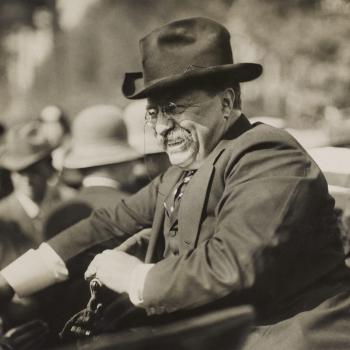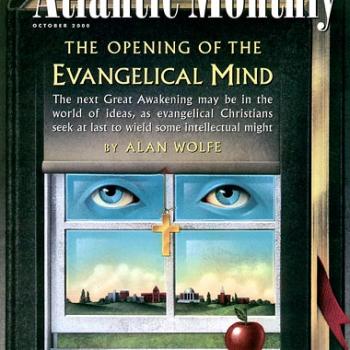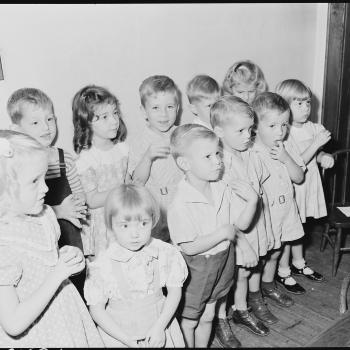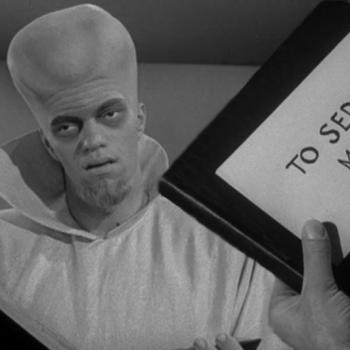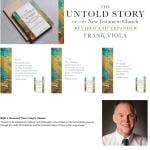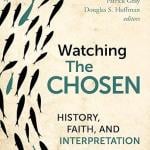Doesn’t anyone remember Mark Noll, David Wells, George Marsden, Donald Dayton, or Douglas Sweeney?
The history of evangelicalism in the United States was not supposed to turn out this way. What had been the Horatio Alger story of twentieth-century American religion by the year 2000 turned out to be equivalent of Humpty Dumpty. To be sure, the evangelical narrative did not put its best foot forward when it entered the twentieth century by splitting the American mainline denominations between fundamentalists and liberals. But after the ignominy of the Scopes Trial in 1925 a bunch of forward-thinking evangelical theologians, sometimes called neo-evangelicals, hatched a scheme to give conservative Protestantism a face lift. They would accent the positive and avoid the sort of theological mud slinging that had given fundamentalism such a bad reputation. Important pieces fell into place like the National Association of Evangelicals (1942), Fuller Theological Seminary (1947), and Christianity Today (1956). Providing important assistance were the herculean efforts of Billy Graham, whose good looks and organizational muscle made at least one evangelical Protestant a household name. By 1976 the renovation was complete. In what must have been inconceivable only a decade earlier, each of the major political parties’ candidates for president of the United States claimed to be a born-again Christian, so attractive was evangelical identity. Newsweek magazine blessed conservative Protestantism’s success by baptizing the bicentennial of the United States’ founding as “the year of the evangelical.”
Ever since 1980, however, when evangelicalism enjoyed even greater success in the election of family-friendly, Ronald Reagan, the proverbial wheels have come off this overachieving religious movement. Part of the problem may have been that the spoils of success did just that — they spoiled. Electoral politics proved to be a difficult arena in which to persuade the breadth of the American public that the narrow way of faithfulness was best. Then the downfall of such televangelists as Jimmy Swaggart and Jim Bakker conjured up older images of charlatan preachers like Elmer Gantry, men who claimed to know God’s will even when such knowledge coincided with activity that proved men of God really knew better.
Still, the crisis among evangelicals went deeper than the hypocrisy of television preachers or the volatile mix of piety and politics. Several theologians wrote books during the 1990s that suggested evangelicalism was suffering as much from bad faith as from damaging publicity. David F. Wells arguably made the biggest splash with the first volume of his series on contemporary evangelical theology, No Place for Truth (1993), a book somewhere between social history and theological reflection. In a fairly complicated argument that traced bad doctrine to large social and economic developments in the modern West, Wells blew the whistle on the hollowness of American evangelicalism. His conclusion provided the proverbial rain on evangelicalism’s late twentieth-century parade: “The growth and prosperity of evangelical institutions during the 1970s and 1980s have brought with them much bureaucracy, and bureaucracy invariably smothers vision, creativity, and even theology. Leadership is now substantially in the hands of the managers, and . . . . [t]he only semblance of cohesion that now remains is simply tactical, never theological.”
A year later Wheaton College historian, Mark A. Noll, leavened his critique of evangelical intellectual life with theological insight in The Scandal of the Evangelical Mind (1994). To be sure, his concerns were narrower than Wells’ — the academic institutions and scholars within evangelicalism rather than the theological vitality of the movement. Still, Noll’s opening sentence was not one evangelical leaders could use in fund raising letters. According to Noll, “The scandal of the evangelical mind is that there is not much of an evangelical mind.” If Noll’s and Wells’ books were not enough, the founding trustee of Scotland’s Banner of Truth Trust, Iain H. Murray, piled on with Evangelicalism Divided (2000). Although written with developments in Britain in view, the book clearly faulted American evangelicalism for overreacting against the militancy of fundamentalism and, in the process, abandoning central Christian truths. Other books also indicted the evangelical movement, but the cumulative effect was to raise serious questions about a religious phenomenon that only fifteen years earlier had looked so promising.
Scholars were not the only ones to ask whether evangelicalism had any substance beyond vague and warm affirmations about a personal relationship with Jesus. Religious historians contributed simultaneously to a parallel discussion about their religious identity as evangelicals. This debate was less accessible, confined as it was to scholarly journals. But its implications were equally momentous for a religious category that was becoming increasingly slippery. If the academics paid to study evangelicalism were not sure what they were examining, how could rank and file pastors and lay people have confidence when describing themselves as evangelical? On the surface, this debate among evangelical historians has been whether the evangelical tradition is fundamentally Reformed or Wesleyan in its theological orientation. The principle interlocutors were Donald Dayton, arguing for the preponderance of Wesleyan influence against George Marsden, whom Dayton believes has skewed the history of twentieth-century evangelicalism as little more than a footnote on Calvinism. Potentially this debate had the makings of another theological donnybrook, with Dayton lining up behind the teachings of Jacob Arminius and Marsden marshaling the anathemas of the Synod of Dort, home to the famous “Five Points of Calvinism.” This dispute also resonated with such cliched dichotomies as head versus heart, doctrine versus life, ministers versus the laity, creed versus the free movement of the Spirit.
Douglas A. Sweeney, who summarized and assessed each side in the discussion, recognized that the debate was as much about what had come of the movement spearheaded by the founding editors of Christianity Today and Billy Graham and associates as it was about developments in American Protestant history. As Sweeney explained it, the issue is not whether Carl Henry studied with Benjamin Warfield or whether Harold John Ockenga spoke in tongues during his undergraduate days at Taylor University. Rather, it is whether the men who put together the institutions of the evangelical establishment actually fashioned a core religious identity capable of uniting all Protestants who were outside or uncomfortable with the mainline Protestant denominations. Sweeney’s verdict did little to curtail enrollments at evangelical seminaries, cut subscriptions to Christianity Today, Inc.’s many magazines, or stop the sale of Contemporary Christian Music CD’s. But it could have; he wrote: “when the fragile unity of the founding neo-evangelicals ended, nothing remained to support the common perception of evangelical unity.” (Deconstructing Evangelicalism)



